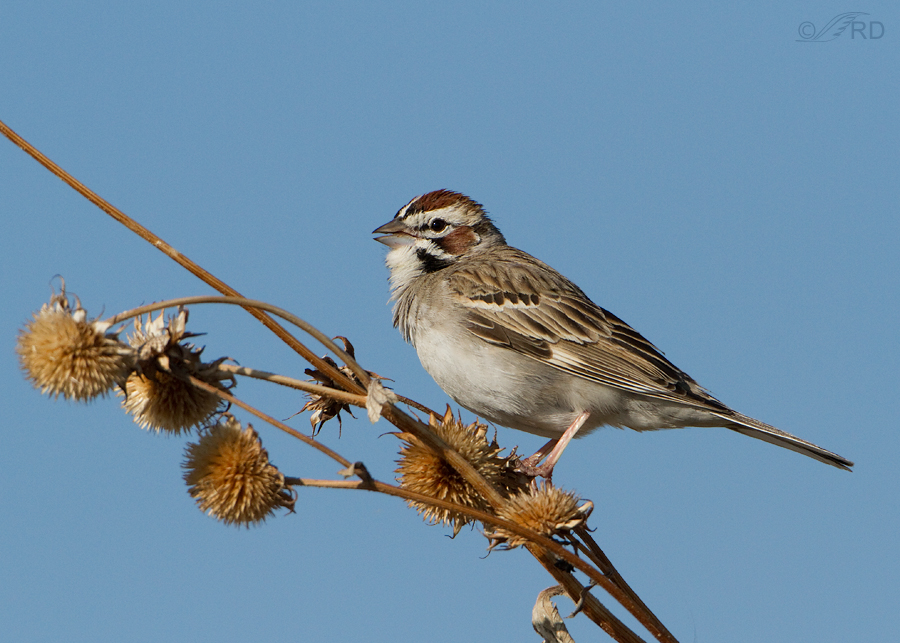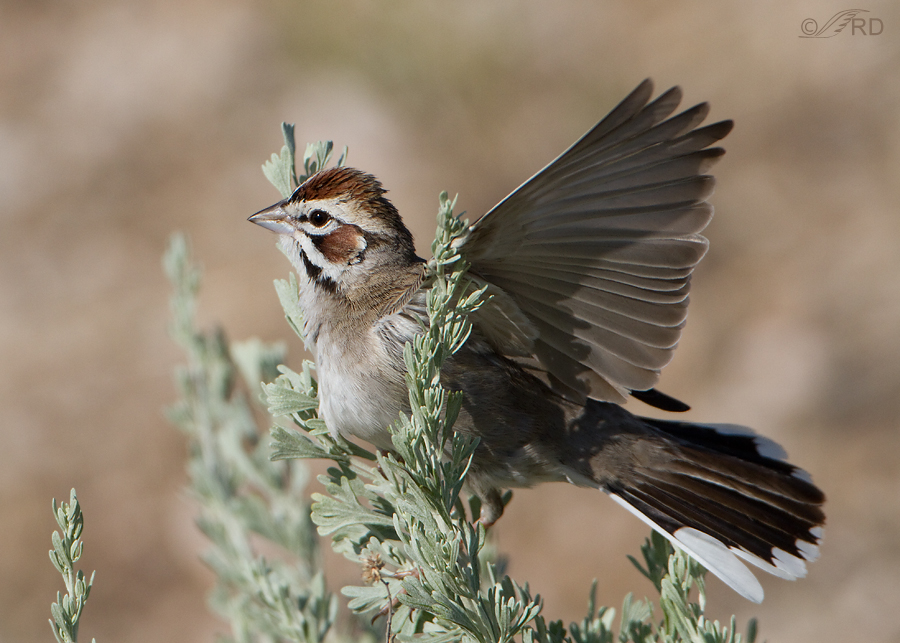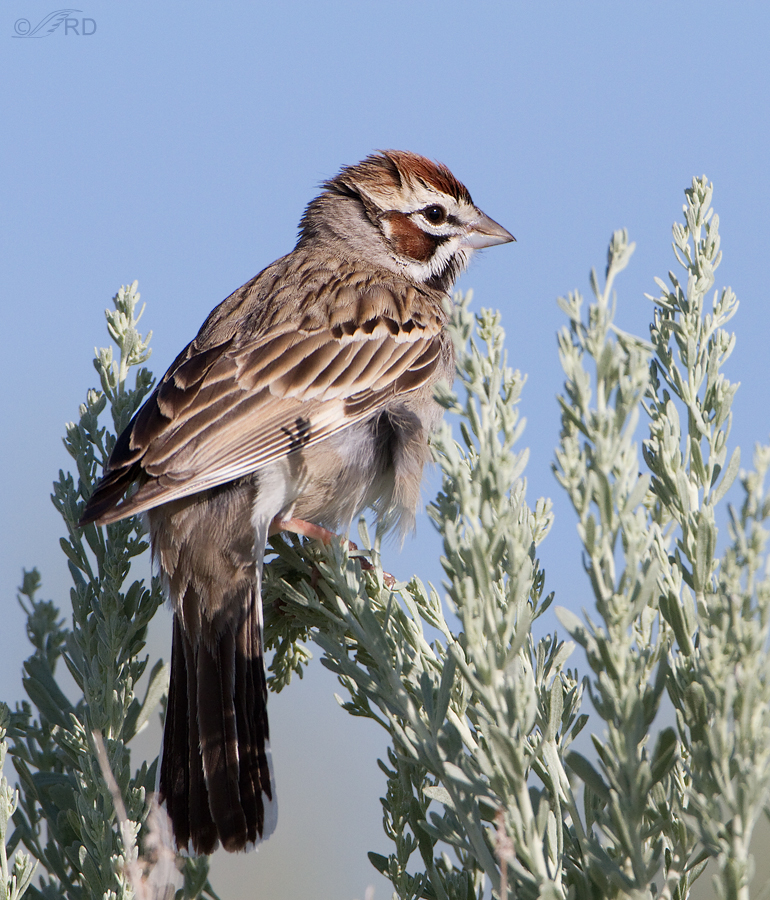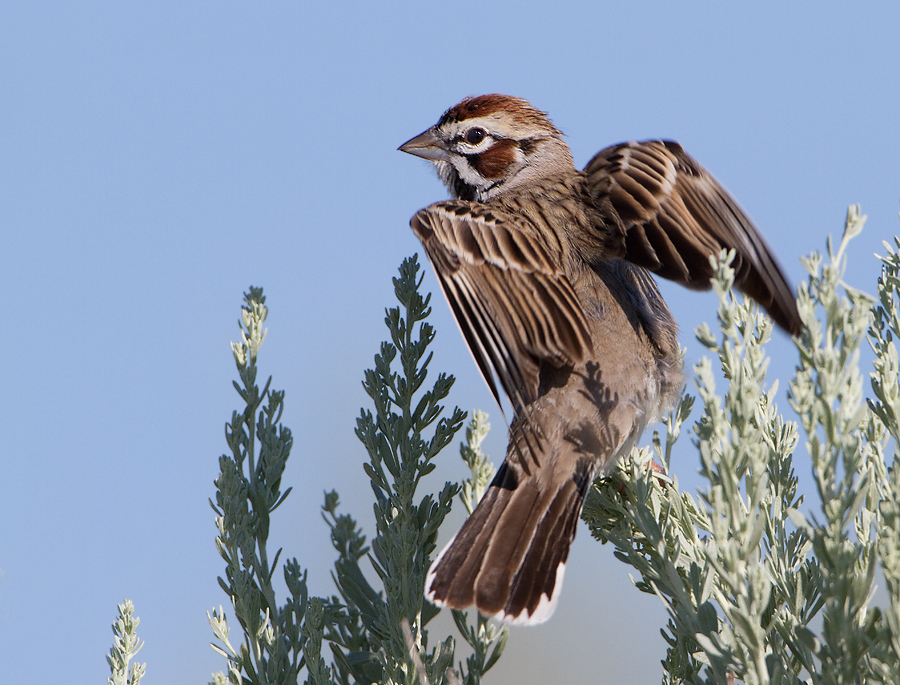I’ve never had much luck with Lark Sparrows but this spring my fortunes with them have improved. It seems to be a banner year for them on Antelope Island and some of them even cooperate occasionally. In fact, most of the images in this post are of the same bird. It was so intent on its singing and territory declaration that it flew from perch to perch for quite a while and gave us some close looks.

1/1600, f/10, ISO 500, 500 f/4, 1.4 tc
These are large, long-tailed sparrows with a distinctive chestnut, black and white facial pattern that gives them a harlequin look. The sparrow is perched on a dried sunflower with significant depth so I went to f/10 for this shot to try to get as many of the seed heads as sharp as possible.

1/3200, f/6.3, ISO 500, 500 f/4, 1.4 tc
In this shot the same sparrow is changing its position on a sagebrush perch and I was able to catch it with a wing and tail position that I like. I do wish there were no sage leaves behind the head though.

1/3200, f/6.3, ISO 500, 500 f/4, 1.4 tc
After it settled its position on the sage it gave me some nice eye contact.

1/3200, f/8, ISO 500, 500 f/4, 1.4 tc
I’ve said before on this blog how much I enjoy sage perches but they’re not without their problems for the photographer. Dead twigs from last years growth often stick up above the more attractive leaves and those twigs can make for a busy setting. I enjoy the light and the singing pose in this image.

1/1600, f/8, ISO 500, 500 f/4, 1.4 tc
I’m always looking for the possibility of a take-off shot and occasionally I pick up a new trick to improve my chances. Most often birds will take off in the direction they’re facing on the perch and I try to leave extra room in that direction for the take-off. But when there’s vegetation in front of them they’ll often…

1/1600, f/8, ISO 500, 500 f/4, 1.4 tc
do a dramatic turn just as they lift off and go the other way. In this situation I anticipated that possibility and allowed for enough room to the left in the frame for the bird to fly (and look) into.

1/2000, f/8, ISO 500, 500 f/4, 1.4 tc
Here the sparrow, after flitting from perch to perch for several minutes, returned to the same sunflower as in the first image in this post. Notice that at f/8 the seed head on the far left is softer than it is in the first shot. Not a lot, but noticeably.
Now that I have some decent images of this species my next goal with them is to capture some of their unique behaviors. These birds often pass a twig from the male to the female during copulation (an impressive display of multitasking and concentration). And they do a turkey-like strut during courtship. I would love to capture either behavior!
Ron


Normally I check in to NPN, to see whats happening in the avian gallery. Not any more, now i check this Blog to find compelling photography and interesting accompanying text. Thank You Ron
I soak up every image and word.
Thanks a lot Rohn – so nice of you to say. I hope to keep your interest with future posts.
The seed heads are beautiful compliments to these handsome fellows. Never noticed the larger proportion of white on the outer tail feathers. Looking forward to future “baton passing” pics!
I like the seed heads too Mike, especially when I can get them all in focus…
I think the Lark Sparrow is one of the prettier of the sparrow species. Great photos, Ron.
Thanks Bob. They are handsome devils, aren’t they.
I loved these shots. Thank you. However, I am also in the sidelines cheering you on as you attempt your new goals for this elegant little bird.
Thank you Elephant’s Child. I don’t know if it’ll ever happen but I’m certainly going to be on the lookout for those behaviors.